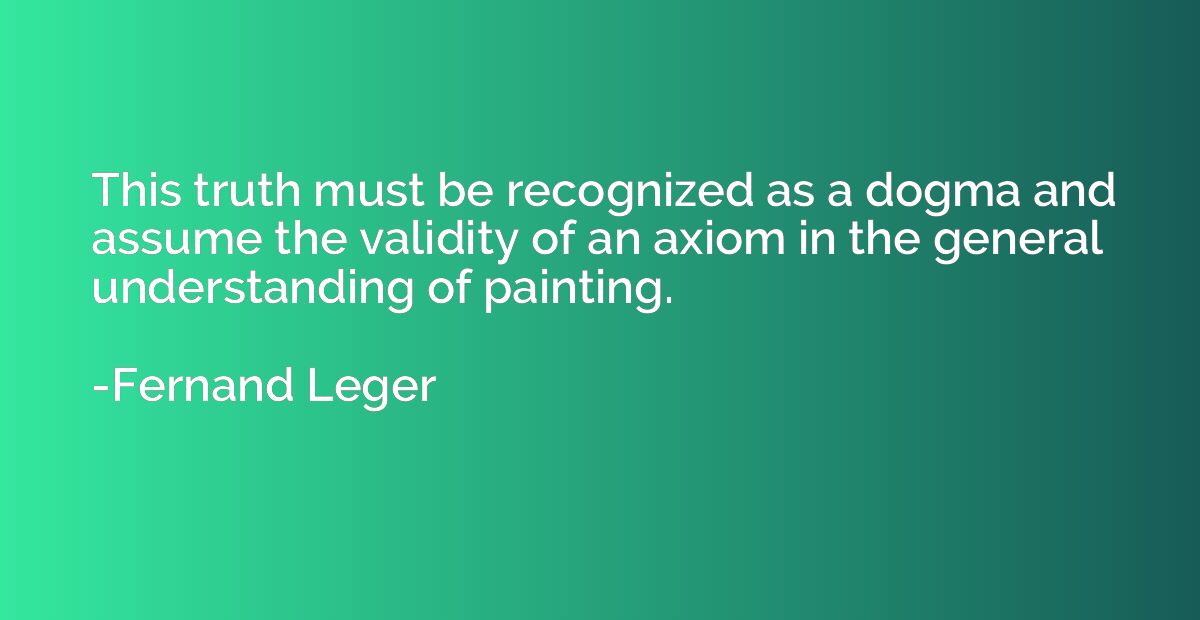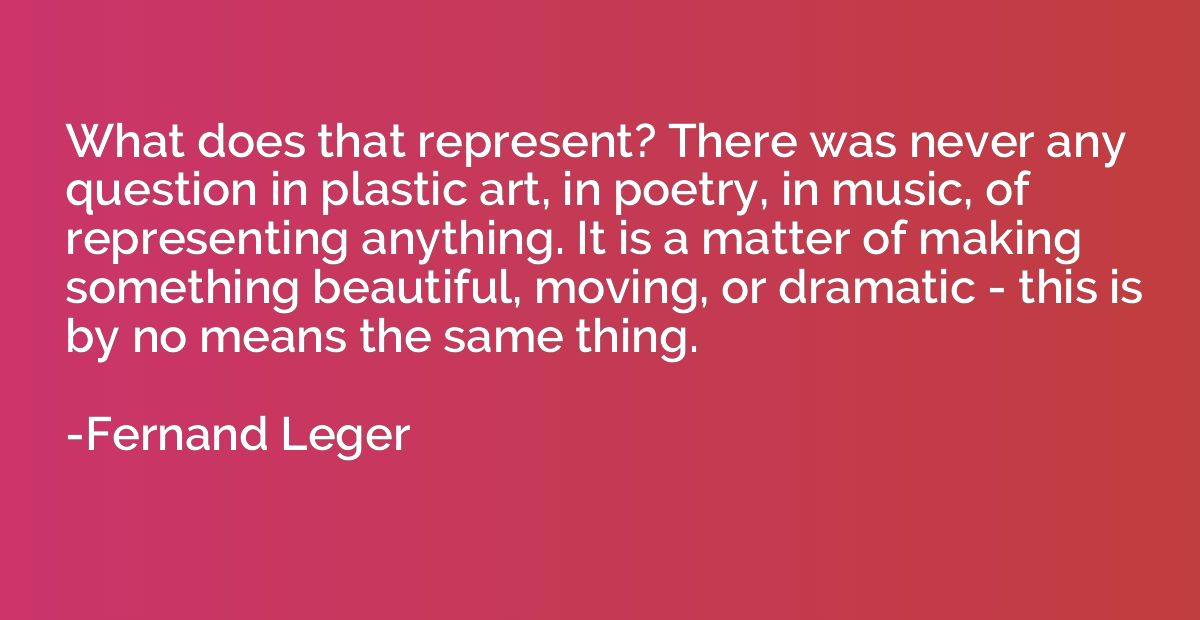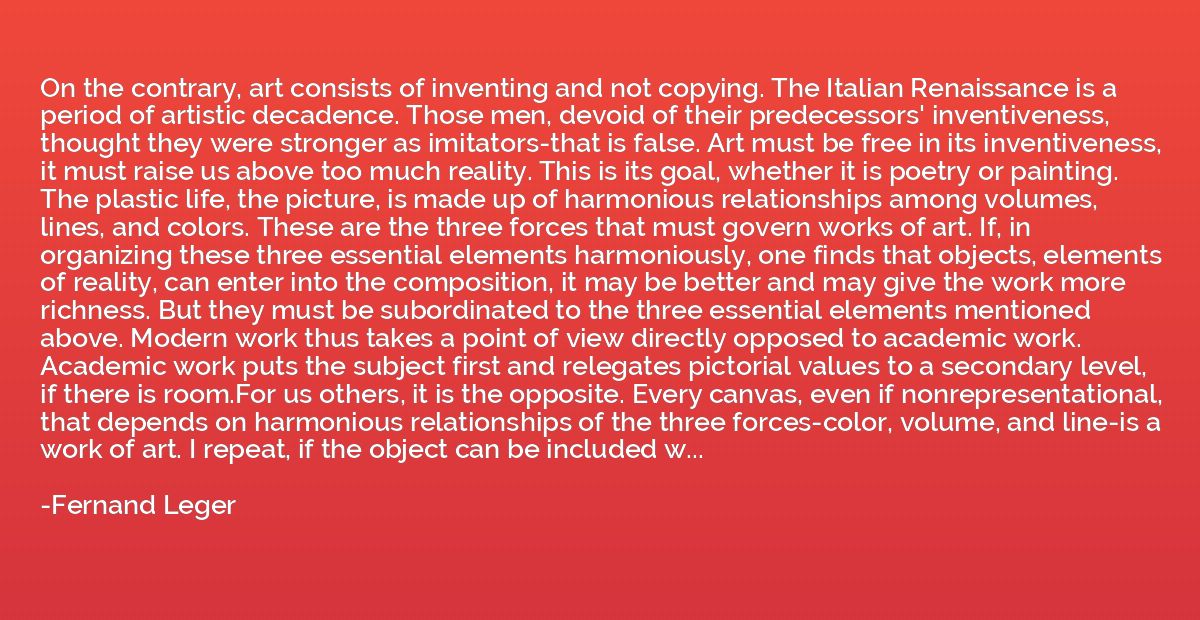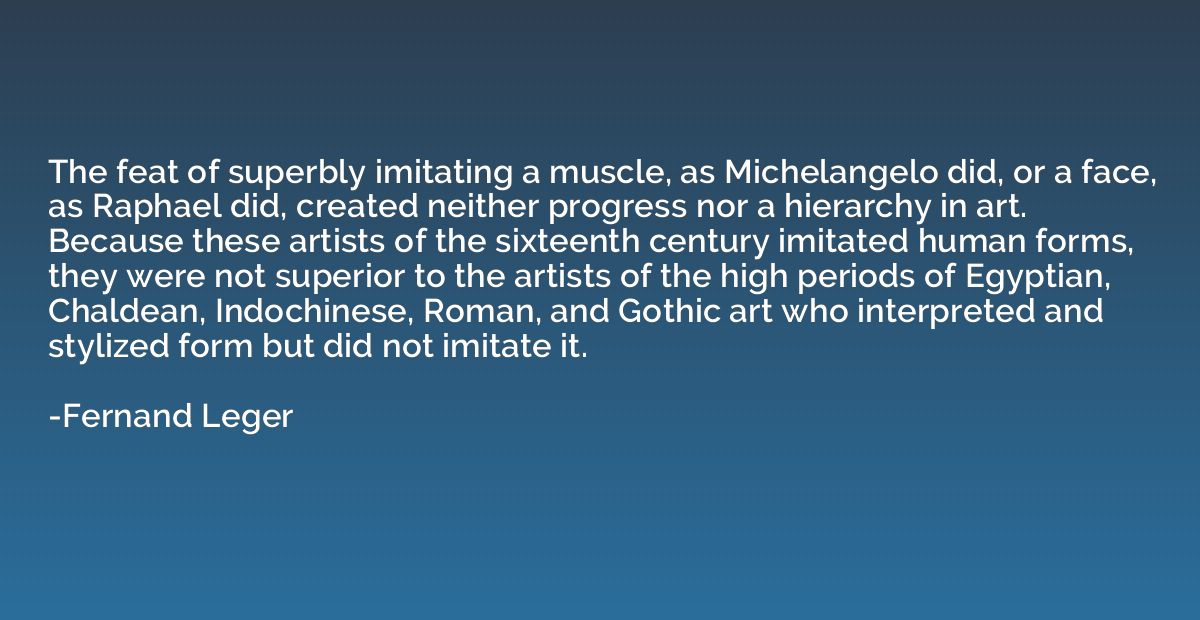Fernand Leger Quotes
A collection of quotes by Fernand Leger.
Fernand Léger (1881-1955) was a prominent French painter, sculptor, and filmmaker, considered one of the major figures of the early 20th-century modern art movements. Born on February 4, 1881, in Argentan, France, Léger showed an early passion for art, apprenticing as an architectural draftsman before moving to Paris to study painting in 1900.
Léger's early works were influenced by Impressionism and Fauvism, but he later developed his distinctive style that combined Cubism and Futurism. With bold colors, simplified geometric shapes, and a focus on industrial subjects, he depicted the rhythm and energy of modern urban life. His paintings often featured mechanical objects, such as machines, factories, and cityscapes, capturing the spirit of the machine age.
Beyond his prolific painting career, Léger also explored other art forms. In the 1920s, he ventured into filmmaking, creating abstract films that showcased his artistic vision. He later embraced sculpture, producing large-scale works that incorporated his signature style.
Throughout his career, Léger's work underwent various shifts but continued to reflect his fascination with modern machinery, technology, and the working class. His innovative approach to art had a significant influence on future generations of artists, and he became known as a key figure bridging the gap between traditional art and the emerging abstract movements of the time.
Fernand Léger passed away on August 17, 1955, in Gif-sur-Yvette, France, leaving behind a rich legacy of artwork that continues to inspire and captivate audiences worldwide.






